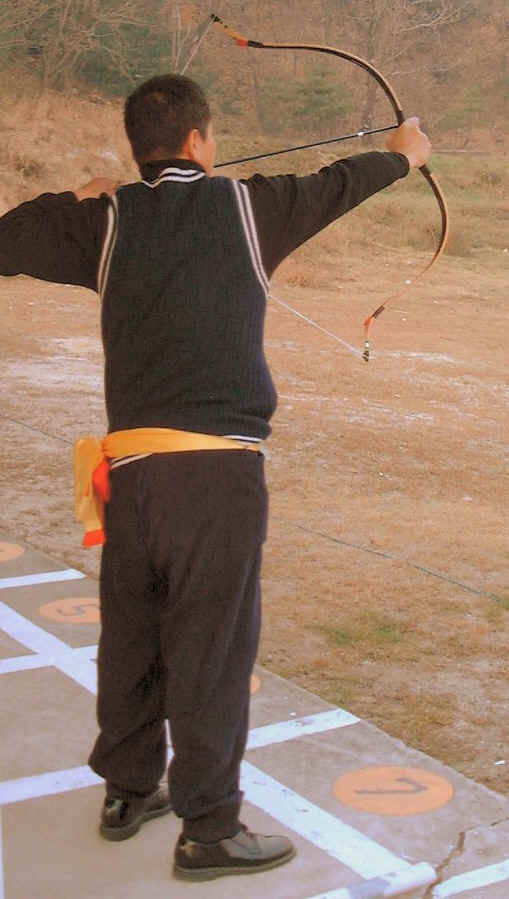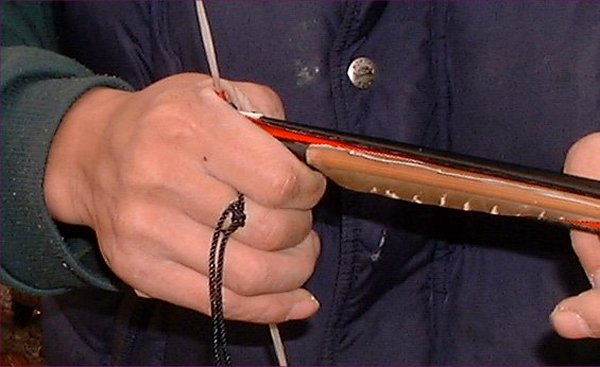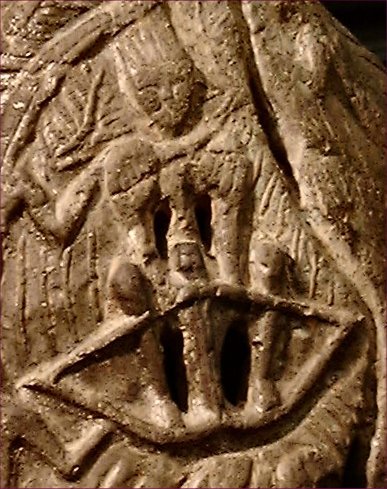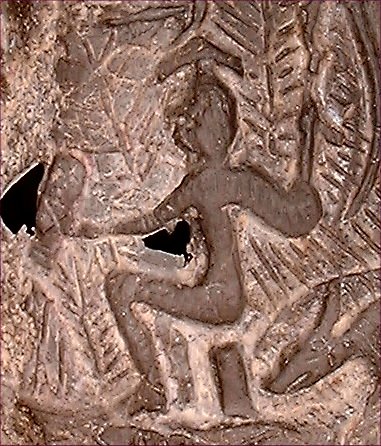
Asian Traditional Archery Research Network (ATARN)
Text and
photographs © Stephen Selby, 2001.
A1, Cloudridge,
30, Plunkett’s Road,
The Peak, Hong Kong.
Fax: (852) 2808-2887
email: srselby@atarn.org
December 2001
Dear All,
모든 분들께,
ATARNet has been up and running for a month. It's certainly easier on the eyes
that the previous Discussion Forum. I am still ironing out some bugs, but I
think most Members have been happy with it.
아시아전통궁술연구망ATARNet은
달마다 '업그래이드'되고
발전하고 있습니다.
저번 토론회에서는
보기가 훨씬 더
편해졌읍니다.
저는 아직도 문제점들을
없애고 있지만,
대부분의
회원들께서는 그걸 보시고서
즐거워하셨다고 저는
생각합니다.
In last month's discussions, we achieved the most thorough examination in
history of Philippine water buffalo horn (there's nothing you can't find on the
Internet!) There have been some other interesting discussion threads and some
fine photos have been up-loaded. Remember that there is more than one page to
the ATARNet forum now. Make sure you check out 'page 2...' so that you don't
lose out on interesting threads.
지난 달
토론에서,
필리핀 물소뿔(
인터넷에선
발견할 수 없는)의
유래에 대한 조사를
통해 많은 것을 얻었읍니다.
또 다른
흥미로운 토론
줄거리와 추가로
올려진 정밀한
사진들이 있었읍니다.
지금 ATARNet
토론장에는 1
페이지뿐만
아니라 더욱 더 많은
페이지가 있다는걸 명심하십시요.
2페이지...
등등을 찾아내어
다른 재미있는
이야기들을 놓치지 마십시요.
I have had an interesting few days' discussion with Hong Kong's Museum of
Coastal Defence, which will host my collection of Asian archery equipment for
five years. Realistically, the exhibition will not be ready for formal opening
until the middle of May, 2002. We plan to have a formal opening ceremony and to
have a decent, printed catalogue for the exhibition. You are all warmly welcome
to attend!
홍콩의 해안경비
박물관에서의 며칠간의
재미있는 토론회를
가졌는데,
거기서 5년동안
모은 나의 아시아 궁술
장비 소장품들이 주로
전시되었습니다..
실제적으로,
2002년 5월
중순이 되기까지는
이번 전시회는 공식적
시작이라고 보기엔 미흡합니다.
우리는 공식
개관 행사를 열 계획을
하고 있고,
품위있는 인쇄된
전람회 목록도 준비할
예정이다.
여러분 모두를
따.뜻.이.
초.대.합니다.
Tentatively, we think that ATARN's symposium on Asian archery should be held at
the museum here in Hong Kong to coincide with the opening. The bowyer from
Peking, Ju Yuan Hao, has been invited, and we are hoping to have bow and arrow
makers from Korea present as well. We might be able to get a participant from
Mongolia, and it would be great if we could have someone from Japan.
Please mark your diaries for the exhibition opening and possible symposium in
mid-May, 2002.
임시적인
생각이지만 ,
ATARN의 아시아 궁술
좌담회는 이 곳 홍콩의
박물관 개관과 함께
같이 열려야한다고
생각하고 있습니다.
북경의 "유
양하오"씨는
이미 초대되었고,
또한 한국에
계시는 궁장 및 시장들도
초청하려합니다.
몽골의 관계자도
초청이 가능하리라
봅니다. 만일
일본에서도
몇몇분들이 오신다면
정말 멋질 텐데요...
2002년 5월
중순의 예정된
좌담회와 전시회를 당신의
일정표에 표시해 주시길.....
In November I was in Korea. I was lucky to be able to make short visits to the
Korean Military Academy as well as the Bows and Arrows Museum in Paju.
11월에 나는
한국에 있었는데,
한국육군사관학교와
파주의 궁시박물관을
방문할 수 있었던 것은
아주 행운이었다.

Col. Ki-Hoon Kim of the Korea
Army Museum kindly met me and took me around the facility. The museum
comprehensively covers Korean military history. It is a wonderful opportunity to
study Chinese military history as well, because there has been a long cultural
cross-fertilization between the two cultures.
한국육군박물관의
'김기훈'
대령님은 반가이
나를 맞아주었고,
시설 여기저기를
안내해주었다.
박물관은
포괄적으로 한국 군사/전쟁
역사를 보여주고 있었다.
중국과 한국의
두 문화사이의 오랜 문화적
상호연관성이
있었기에 중국의 전쟁
역사뿐만 아니라
한국도 연구할 수 있는
멋진 기회였다.
The Military Museum has an outstanding collection of archery equipment, covering
bows, arrows, quivers, accessories, crossbows and archery-derived machines of
war. The collection is well displayed and well-lit ─ but be forewarned
that there are no labels in English!
군사박물관에는
활,화살,전동(화살통),
기타 부속물,
노, 활에서
파생, 변형된
전쟁 무기등을 포함한
걸출한 소장품들이
있었다. 그
것들은 잘 전시되고,
조명도 멋졌다.
그러나 영어로
된 표시판이 없었다는
것을 알려주고 싶다.
|
|
|
What impressed me most was the
group of young officer-cadets (both men and women) who were learning traditional
Korean archery under the tutelage of archer/bowyer Kim Keong-won. Mr Kim is
descended from three generations of Korean bow-makers. His father did not pass
on his skills; but Kim Keong-won took the initiative to learn the craft from
Bowyer Park Geuk-hwan of Kyongju.
내게 가장 인상
깊었던 것은 젊은
사관생도들(
남.녀생도
모두)의
모임이 궁장이자 궁사인
'김경원'씨의
교육.지도
아래 한국 전통궁술-국궁을
배우고 있다는
사실이었다.
김씨는 한국
전통 궁장을 3대째
내려오고 있는데 ,
그의 부친은
그의 기술을 전하지 못하였다,
그러나 '김경원'씨는
경주의 '박극환'
궁장으로부터 그
기능을 솔선하여
배우고 있는 중이다.

|
|
|
I had a good chat with the Korean
officer-cadets about the English longbow tradition and the points of excellence
of the Korean horn bow. I also demonstrated some points of Chinese archery: they
were quite amused at the thought of blind nocking an arrow.
나는 한국사관생도들과
영국의 전통적 긴 활과
한국 각궁의 우수성에
관한 요점에 대해 좋은
이야기를 나눴다.
또한 나는 중국
궁술에 관한 몇가지를
설명해주었는데,
그들은 마구잡이로
화살을 시위에 건다는
관점에 대해 매우
재미있어 했다.
A long drive took me, Tom and Nick Duvernay to Paju to visit the Bows and Arrows
Museum set up by master fletcher Young-gi Yoo. We were shown around by his son,
Se-hyun Yoo, who is a master fletcher in his own right.
온랜 동안 차를
타고 가서 나와
듀버나이 부자(톰과
닠-역자주;
당연히 톰은
토마스, 닠은
니콜라스의 애칭이죠 ^^)는
파주에 도착하여 시장 '유영집'
님이 세운 궁시박물관을
방문하였다.
거기서 그의
자제이자,
그 자신 또한
시장인 '유세현'씨가
이곳저곳 잘
안내해주었다.

Tom and Nick Duvernay with Se-hyun Yoo
'유세현'씨와
함께 있는 톰 과 닠(토마스와
니콜라스)
|
|
|
Bede Dwyer introduced me to the
use of the side-arrow guide (Arabic and Turkish Majra). I had a chance to study
its use in the hands of an expert, Se-hyun Yoo. The side arrow is the logical
extension of the idea of an overdraw. The tube - a fist longer than a full-size
arrow, accepts a short dart. Such darts can achieve enormous speeds and better
still, without the same equipment, the enemy can't shoot the short darts back.
비드 도위어Bede
Dwyer씨는 버금(비정규)
화살 유도기 (아랍식
과 터키식 '마즈라
Majra' // 역자
주; 대충
우리의 '통아'
개념으로
생각해주세요 ^^
)의 사용에 대해
나에게 가르쳐주었다.
나는 숙달된
전문가인 '유세현'님이
손수 시범을 보인
그것에 대해 연구할
기회를 가졌다.
이 버금(비정식)
화살은 몰촉(과잉당김)개념의
논리적 연장선상에
있다. 화살의
총 길이보다 더 긴
대롱은 짧은 편전-애기살을
수납하며,
그 편전은
속도가 매우 크며,
소리는 더욱
조용해진다,
같은 장비를 갖추지
않은 이상 적들은
편전을 다시
재사용하여 쏠 수가
없다.

How the dart lies in the arrow guide
'통아'에
담겨진 편전/애기살

How the arrow guide is held before the draw (ring and little fingers are not
used in the actual draw.)
At the release, the archer releases the string and arrow, but the guide stays
back with the draw-hand,
held by the loop around the middle finger.
시위를 당기기
전 통아를 쥐는 방법(
각지와
손가락들은 실제
시위당김에 사용되지
않는다.) 발시
순간,
시위와
화살을 놓지만 통아는
중지 주위의 매듭에
의해 각지손에 다시
매달리게 된다.
Preoccupied with the prospect of his own mortality, The first emperor of China,
Qin Shi Huang (259-210 BCE) was said to have sent ship-loads of young men and
virgins to search for the island of Penglai where, it was said, the herb of
eternal life grows. Whatever the young men and virgins got up to on their
travels, it did not include coming home with and magical herbs!
그 자신의
생명이 다함을 예지한,
중국의 초대
황제인 진시황(기원전
259 ~ 210년)은
'불로초'가
있다는 소문의 '봉래도'를
찾으라고 선남선녀들로
구성된 선단을
내보내라고 명령했다.
그렇지만 머너먼
여정을 떠난
선남선녀들은
불로초를 찾지도
못하고, 고향으로도
돌아가지 못하였다.
The legends lived on to the Western Han Dynasty, when it was fashionable to bury
incense-burners in the shape of the mythical island with the dead. Once lit, the
smoke from the incense seeped out through holes in the cover of the burner and
formed swathes of mist around fantastic scenes of immortals hunting deer,
tigers, bears and mystical chimera.
서한西漢시대에
이르기까지 이 전설을
계속되었고,
그때는 그 죽음과
함께 전설의 섬 모양을
본뜬 향로가 유행이었다.
한번 불을
밝히면, 향로의
뚜껑에 있는 구멍을
통해 향연기가
스며나와 불사의
신선들이 사슴,
호랑이,
곰 그리고
전설의 신비동물 들을
사냥하는 환상적 장면
주위로 향무香霧를
만들었다.
I came across one such incense burner in Hong Kong last week.
저번 주
홍콩에서 나는 우연히
이러한 향로의 일종을
보았다.

Western Han (206 BCE - 8 CE) 'boshan' incense-burner.
서한西漢 (기원전
206년
~ 서기
8년)
'보샨boshan'
향로 (
역자 주 ;
아마도 寶山인듯..^^)


An immortal with a special head-dress sits on a tree stump beating a small drum
or cymbal.
특이한 두건을
쓰고 있는 신선은 작은
북을 치면서 나무 그루터기에
앉아 있다.
We should safely be able to assume that these scenes represent the way that the Han aristocracy went on hunting parties. A genre of poetry of that time, the 'Fu' style, often described hunting trips in the royal hunting parks in lavish language. If you look at some of the Chinese crossbows I have described on ATARN, clearly we are looking at hunting equipment for the aristocracy rather than a foot-soldier's weapon of war.

Going hunting with a crossbow
노를 들고
사냥가기.
Again we get a clear impression of the size and proportion of the early Han
crossbow. The hunter seems to have a wooden table or case strapped over his
shoulder. It's too big for crossbow quarrels (but it would be handy for a
hunting rifle and telescopic sight!) I wonder what it was used for...
초기 한나라의
노의 구성 비율이나
크기에 관한 명확한
느낌을 다시 얻었다.
사녕꾼은
어깨너머로 끈으로
묶은 나무 탁자나 함을
가지고 있는것 처럼
보인다. 쇠뇌함으로
보기엔 너무 크며(그러나
사냥용 총이나 망원경을
넣기엔 딱 알맞다!)
, 무슨 용도인지는......
I look forward to reading your answers on ATARNet.
아시아전통궁술연구망ATARNet에서
당신의 답변을
기다립니다.
|
|
(Signed) (Stephen Selby) |